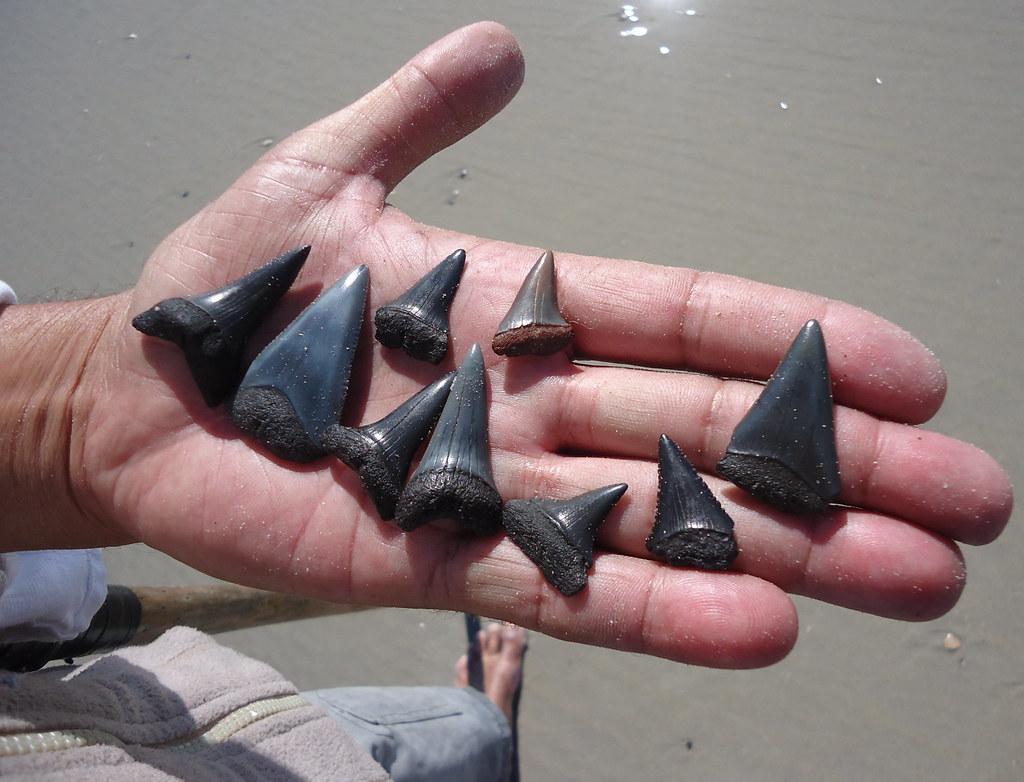Whether you are young or young-at-heart, hunting for shark’s teeth is one of the coolest past-times you can partake in, in Siesta Key. And there is a pretty good chance that you will find at least one tooth washed up onshore. Just step outside of our beachfront condos on Siesta Key and take a walk along the shore.
With that being said, let’s look at some of the types of shark teeth you can find on Siesta Key’s white sand beaches, how you can identify your finds, and how safe Siesta Key’s beaches are for shark teeth hunting.

Shark’s Teeth You Can Find on Siesta Key
There are a few different types of shark’s teeth that you can find on any given Siesta Key beach. You will more than likely find teeth that once belonged to a Great White. You can also find teeth from a Sand Shark or even a Hammerhead Shark! Some of these will be from deceased sharks, but some will be from those that are still living.
You will likely want to try Venice Beach (which is about a half-hour drive away) for finding fossilized shark teeth. The northern side of Longboat Key is also good for finding shark’s teeth. However, the nicest beaches are on Siesta Key proper. Turtle Beach is especially good for finding shark’s teeth. You might just find one while talking a leisurely stroll!
Also, you will need something to strain the sand though, so even using a plastic colander from a department store will work. Just gather up some sand and dump it in. Let the sand sift through the strainer’s holes, and voila! You might just find a shark’s tooth at the bottom. You will have to spend some time doing this though. Also, note that people tend to find more shark’s teeth after a storm (since storms tend to wash them up onshore).

How to Identify Your Shark Tooth Finds
Let’s now discuss how to identify shark’s teeth. Fossilized shark teeth are from the Miocene and Pliocene eras, but good luck trying to find a Megalodon shark’s tooth! Shark’s teeth are quite small by comparison to what you envision after watching Jaws or Sharknado.
You can identify teeth based on their shapes and serrations. As you probably already know, these teeth are dark and triangular. They take on a glossy quality. Of course, not all shark teeth are created the same, so you will have to identify the teeth by shark species – and that takes some studying!
Here are a few examples:
- White sharks have flat, triangular teeth that have some serrations on the blade, which is about 1.5 to 2.5 inches long.
- Lemon shark teeth are smooth, and the blade is slightly angular, narrow, and flat. Their teeth average at about 0.75 inches long.
- A Sand Tiger tooth will have an elongated crown with long pointed root lobes.
- A living Tiger Shark has teeth with serrations upon serrations.
- A hammerhead shark will have a small tooth with no serrations and a notched margin on its enamel.
Take note that it is incredibly rare to find shark cartilage since it does not fossilize like bone and sharks are predominantly made of cartilage.
You can determine their age by their darkness. Since shark teeth have oxygen in them, and oxygen reacts with minerals to oxidize, a darker color can mean that the tooth is 10,000 years old or older.
Siesta Key is a Very Safe Beach
Siesta Key isn’t a shark-friendly location. The waters are far too shallow for sharks to enjoy swimming around here. That makes Siesta Beach remarkably safe. In fact, it has been decades since any shark bites have been reported in this area.
Wondering what to do with your shark’s teeth? You can turn them into necklaces, take them home as keepsakes, even turn them into pieces of art! While browsing condo rentals in Siesta Key FL, take a break and check out some cool Pinterest ideas for using shark’s teeth that you will find in Siesta Key.


